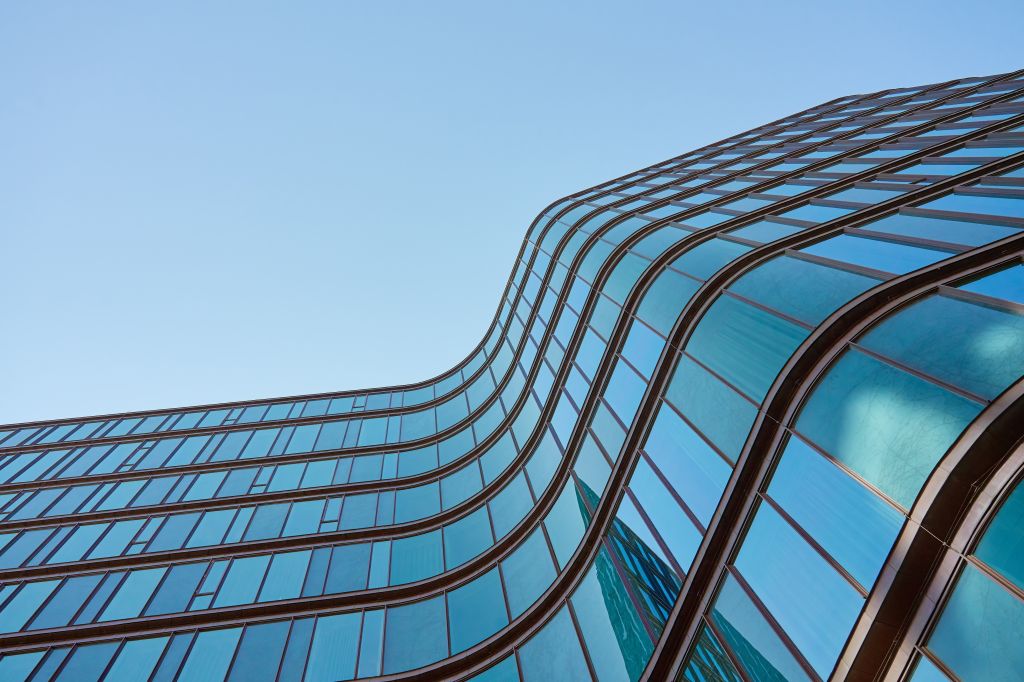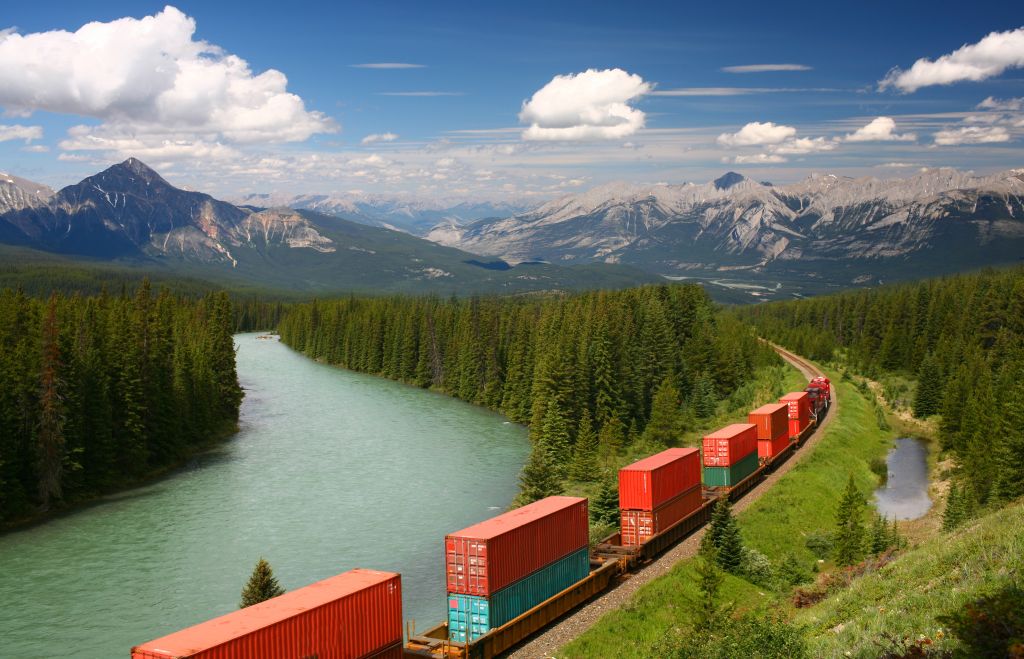Published July 12, 2024 • 7 Min Read
River District is a master-planned community in Vancouver, British Columbia that is showing Canadians new ways to live and recreate. The small- to medium-sized businesses that operate among it are feeling the benefits.
On a particularly sunny Thursday afternoon in June, Malcolm Shield is strolling through River District, a sprawling waterfront community along Vancouver’s Fraser River, on his way to grab a coffee. Shield, the VP of Sustainability at Wesgroup Properties, passes numerous businesses along his route. There are shops and services, like River District Dentistry, Everything Wine, Willowbrae Daycare and Spice Wax Bar, and various dining options, including Lucky Taco, Boketto Tea Bar and Sushi Mura. Bufala, an Italian restaurant known for its Napolitan-style, stone-oven pizzas, chose River District to open its third location, making it the most recent eatery to join the neighbourhood.
The list of small- and medium-sized enterprises (SMEs) in River District is only set to grow. The community aims to span 9.3 million square-feet when it’s finished—that’s roughly 138 football fields—and is currently one-third complete. Still, the community’s “town square” is in full swing.
“It’s somewhere where many of your needs can be met and it has that sense of place that I think people are often looking for in terms of what it is to live with community in mind,” says Shield.
What makes River District unique from other master-planned communities is that it operates with its own private utility company—River District Energy—rather than relying on a public one, thus allowing more control over how emissions are reduced at a community level. River District Energy is a separate utility business that supplies the space heating and hot water to all of the buildings in the River District community. That means that the individual buildings themselves don’t need the equipment that is traditionally required for heating. There are no boilers or pumps in any of the condos or businesses. Instead, all of that equipment is centralized in one plant, and hot water is distributed to the buildings, which is then used to provide space heating and hot water to the residents and business owners.
River District is working with Metro Vancouver’s Waste-to-Energy Facility, which processes about 25% of the region’s garbage (240,000 tonnes) per year, to collect waste heat from the incineration process using a closed-loop piping system.
“Historically, the heat that gets produced by that process has just been vented into the atmosphere,” says Shield. “What we’re going to do is take that waste heat and use it to reduce our use of natural gas by about 90%, so the space heating and hot water for River District will be very low carbon—not quite zero carbon, but pretty close.”
It’s low-carbon, complete communities like these that are helping SMEs take steps to reduce their carbon footprint without much overhead. SMEs are responsible for about half of the greenhouse gases (GHGs) emitted by businesses nationally and as such, have been tasked with making changes in order for Canada to meet its net-zero targets by 2050. Without participation from SMEs, which represent 99% of businesses in Canada and employ 88% of people in the private sector, targets could fall short.
“For most SMEs, the big source of emission is energy use and the building that you’re in,” says Shield. “For River District businesses, our low carbon utility takes this worry out of their hands. The small businesses don’t have to worry about it as the building they’re in will be close to zero carbon. It doesn’t wholly solve the problem, but it’s about making the path easier for SMEs and delivering an off-the-shelf solution for them, so that some of those big challenges, particularly on the building side, they’re taken care of.”
Businesses in River District won’t notice a difference in terms of operations. A wall thermostat that is responsible for setting a room’s temperature, for example, will use heat from River District Energy’s low carbon energy source and will respond exactly as it would if the business were in a strip mall in a different community.
There’s less stress if something goes awry on the building systems side, too. One of the advantages of having River District Energy as the utility is that the responsibility of maintenance stays in-house.
“Traditionally in a building, when boilers need to be serviced, the tenants or owners have to call in an expert for maintenance,” says Shield. “In our case, it’s the responsibility of River District Energy. You have a professional utility running the space heating and hot water, so it’s no longer the responsibility of the strata to hire the maintenance person. You can take that responsibility away from the strata and by passing it on to our utility, the building and SMEs receive better and faster service.”
The new system is expected to be fully operational by 2026.
Small changes that SMEs can make to support net zero
The federal government has developed programs that encourage companies to make lasting change. The Net-Zero Challenge, for example, aims to support SMEs in building net-zero plans that help transition traditional business practices to greener options, like choosing energy sources that don’t produce or limit GHGs. There are grants and tax credits for these types of upgrades available for SMEs, too.
“Typically small to medium sized companies will look at energy efficiency programs or where they can maximize their grants or government incentives,” says Christine Chiu, Director of Energy Transition at RBC. “That’s usually across two main categories: grants available from various federal and provincial levels, and also incoming tax incentives.”
Still, the application process can be tedious (that’s where businesses like GrantMatch can help) and not everyone qualifies, making it challenging for SMEs to participate in a meaningful way.
“Most SMEs will struggle to put up the kind of investment needed to upgrade to renewable energy sources,” says Chiu, but not all hope is lost. There are day-to-day choices that small and medium sized businesses can take in order to support a low carbon future.
Some companies might start thinking about using solar or other renewable energy sources, or consider subscribing to a renewable energy provider, like Bullfrog Power.
“For smaller companies, it could simply be installing smart meters, using LED lighting or switching the lights lower at certain times of day,” says Chiu. “In certain industries, like trucking fleets or different types of equipment, implementing battery-based equipment can make a change. All of these examples help lower a company’s carbon footprint.”
The majority of Canadian SMEs are in the infancy stage of transitioning to net zero. According to a survey by the OECD, nearly a quarter remain unclear about what “net zero” means; and just 10% track their GHG emissions.
Lower-carbon communities like River District are helping change that. The SMEs that choose to do business here will reduce their carbon footprint because of the low carbon utility built into the blueprints at River District. Like Shield says, River District isn’t completely solving all environmental challenges that SMEs face, but it is taking a more holistic approach to achieving a net-zero future, thus allowing small- and medium-sized businesses to focus on what they do best.
This article is intended as general information only and is not to be relied upon as constituting legal, financial or other professional advice. A professional advisor should be consulted regarding your specific situation. Information presented is believed to be factual and up-to-date but we do not guarantee its accuracy and it should not be regarded as a complete analysis of the subjects discussed. All expressions of opinion reflect the judgment of the authors as of the date of publication and are subject to change. No endorsement of any third parties or their advice, opinions, information, products or services is expressly given or implied by Royal Bank of Canada or any of its affiliates.
Any information, opinions or views provided in this document, including hyperlinks to the RBC Direct Investing Inc. website or the websites of its affiliates or third parties, are for your general information only, and are not intended to provide legal, investment, financial, accounting, tax or other professional advice. While information presented is believed to be factual and current, its accuracy is not guaranteed and it should not be regarded as a complete analysis of the subjects discussed. All expressions of opinion reflect the judgment of the author(s) as of the date of publication and are subject to change. No endorsement of any third parties or their advice, opinions, information, products or services is expressly given or implied by RBC Direct Investing Inc. or its affiliates. You should consult with your advisor before taking any action based upon the information contained in this document.
Furthermore, the products, services and securities referred to in this publication are only available in Canada and other jurisdictions where they may be legally offered for sale. Information available on the RBC Direct Investing website is intended for access by residents of Canada only, and should not be accessed from any jurisdiction outside Canada.
Share This Article






